Archive
Traugott Fuchs
- Traugott
- Fuchs
- 23-11-1906
- Lohr (DE)
- 21-06-1997
- Istanbul (TR)
- PhilologistRomanistPoetPainter
Traugott Fuchs was a multi-talented philologist, painter and poet who lived in Istanbul from 1934 until the end of his life in 1997.
Word Count: 21
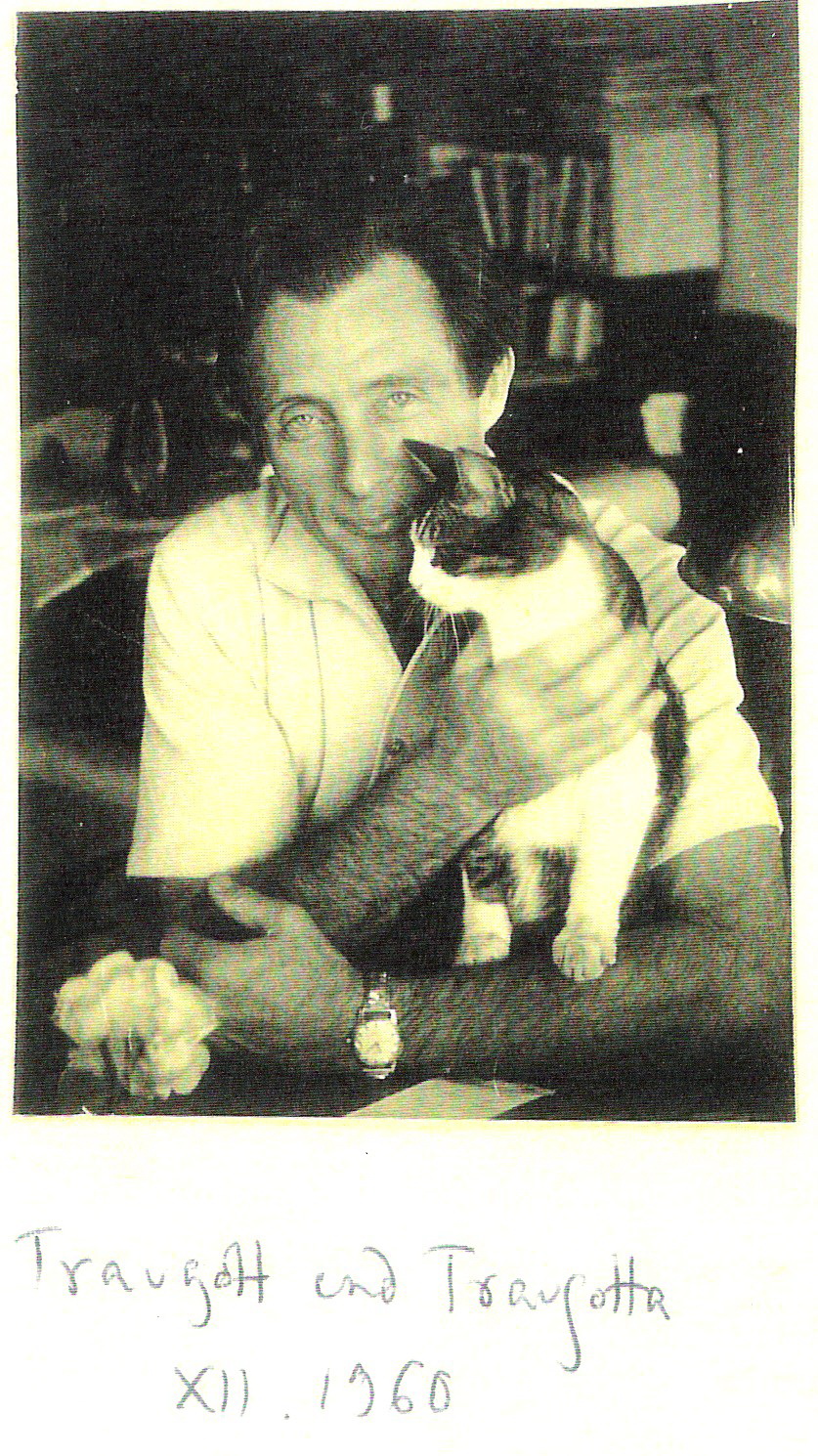
Traugott Fuchs with his cat Traugotta at Robert College, photographer unknown, December 1960 (Traugott-Fuchs-Archiv Istanbul). 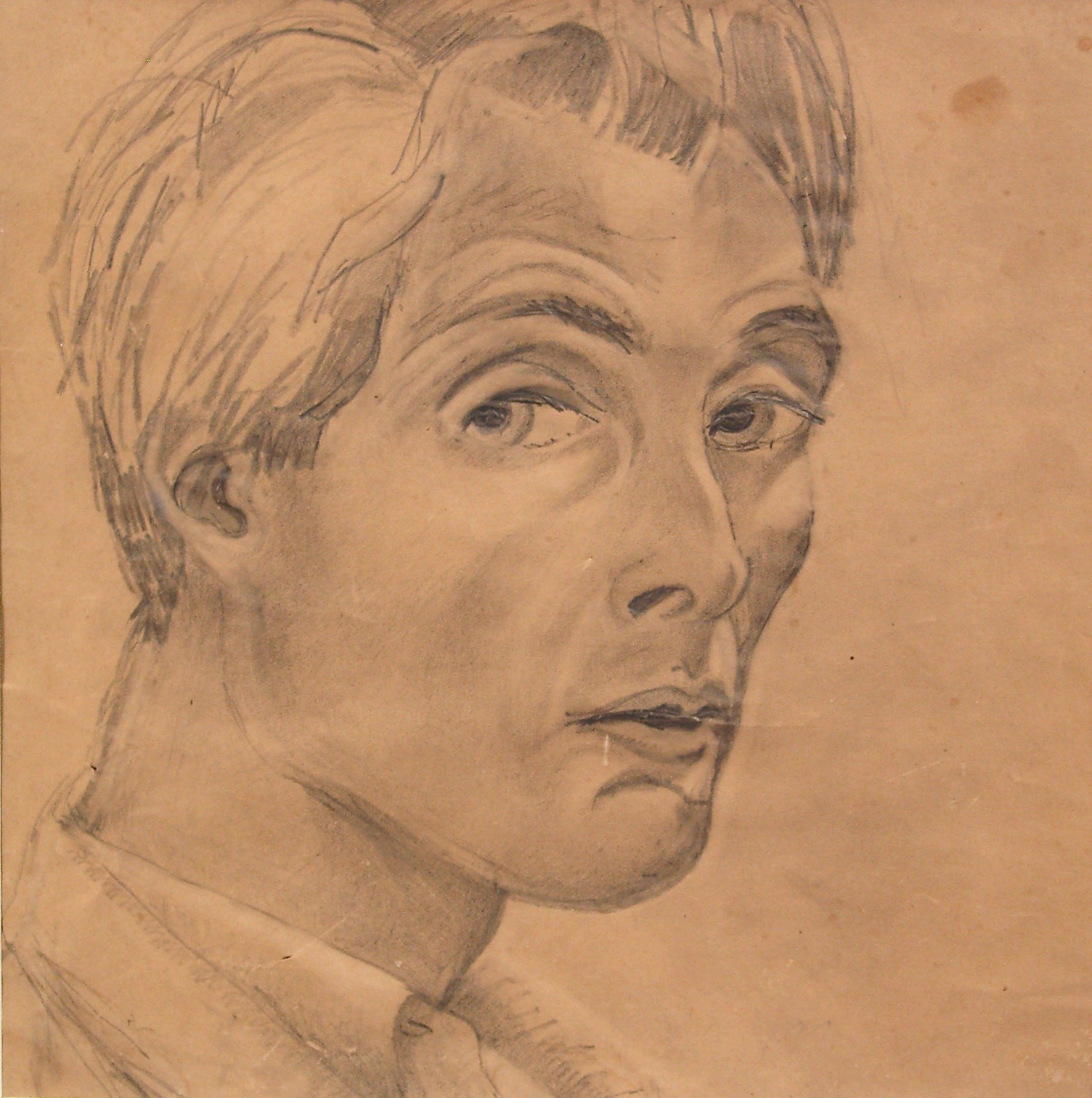
Traugott Fuchs, Self-portrait, c. 1940 (Traugott-Fuchs-Archiv Istanbul). 
Traugott Fuchs, Hekimbaşı Salih Efendi Yalısı, Anadolu Hisarı, c. 1984 (Traugott-Fuchs-Archiv Istanbul). Fuchs draw the villa on the shores of the Bosporus many years after he lived there in 1938. 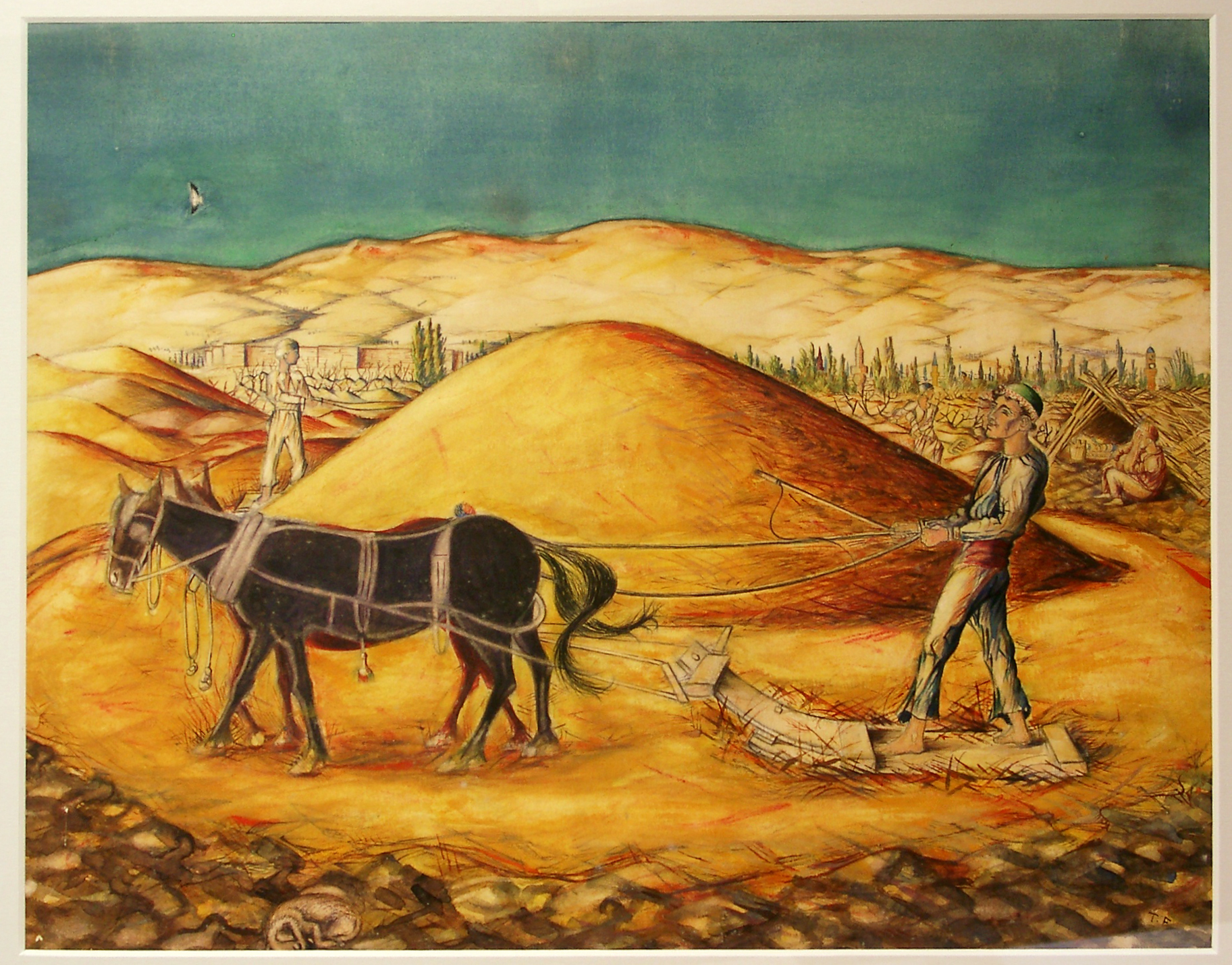
Traugott Fuchs, Harvest I, Çorum, 1945 (Traugott-Fuchs-Archiv Istanbul). This rural scene was drawn during internment. 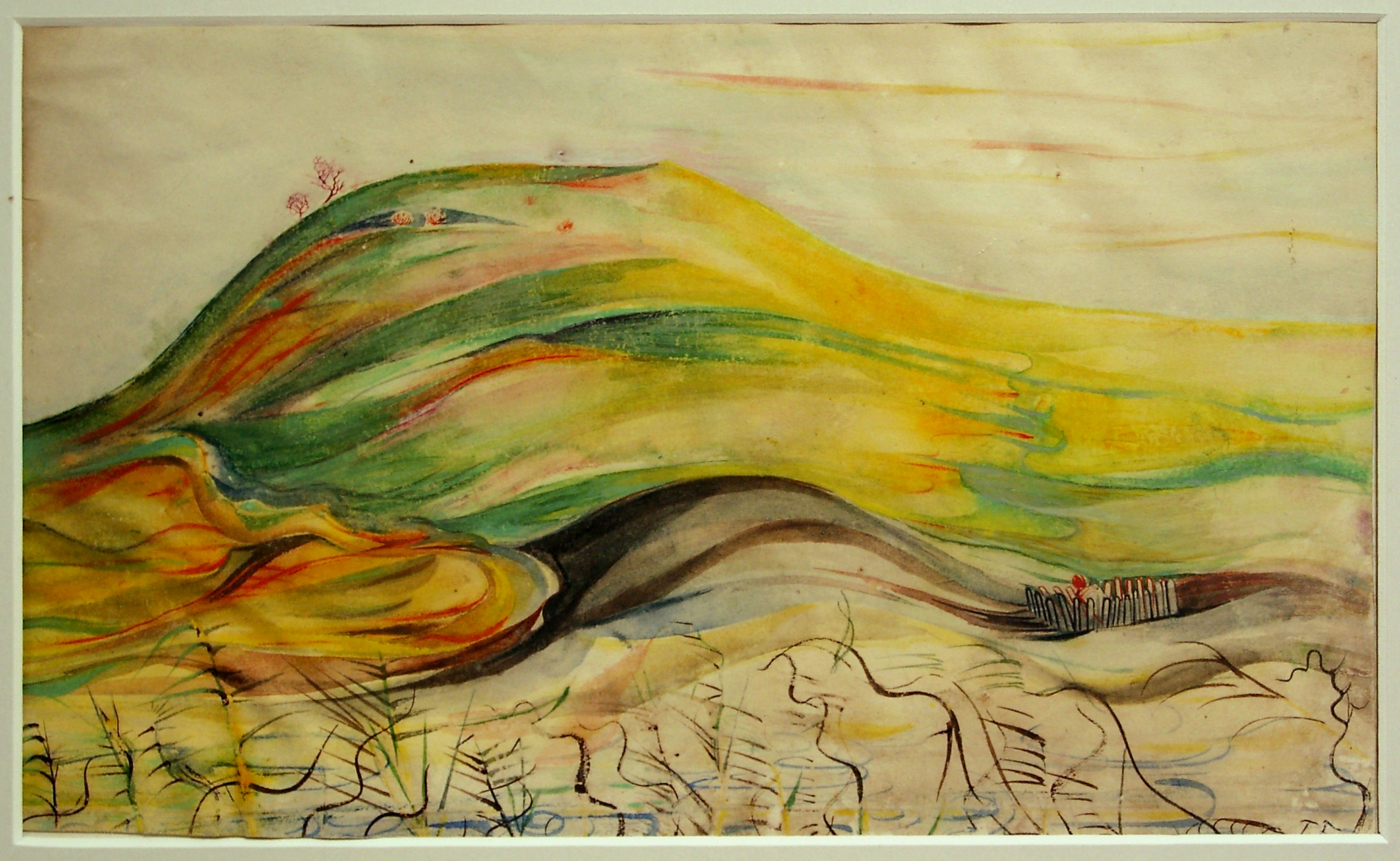
Traugott Fuchs, Lonely tomb at naked mountain, Çorum, 1945 (Traugott-Fuchs-Archiv Istanbul). The artist painted this picture during internment. 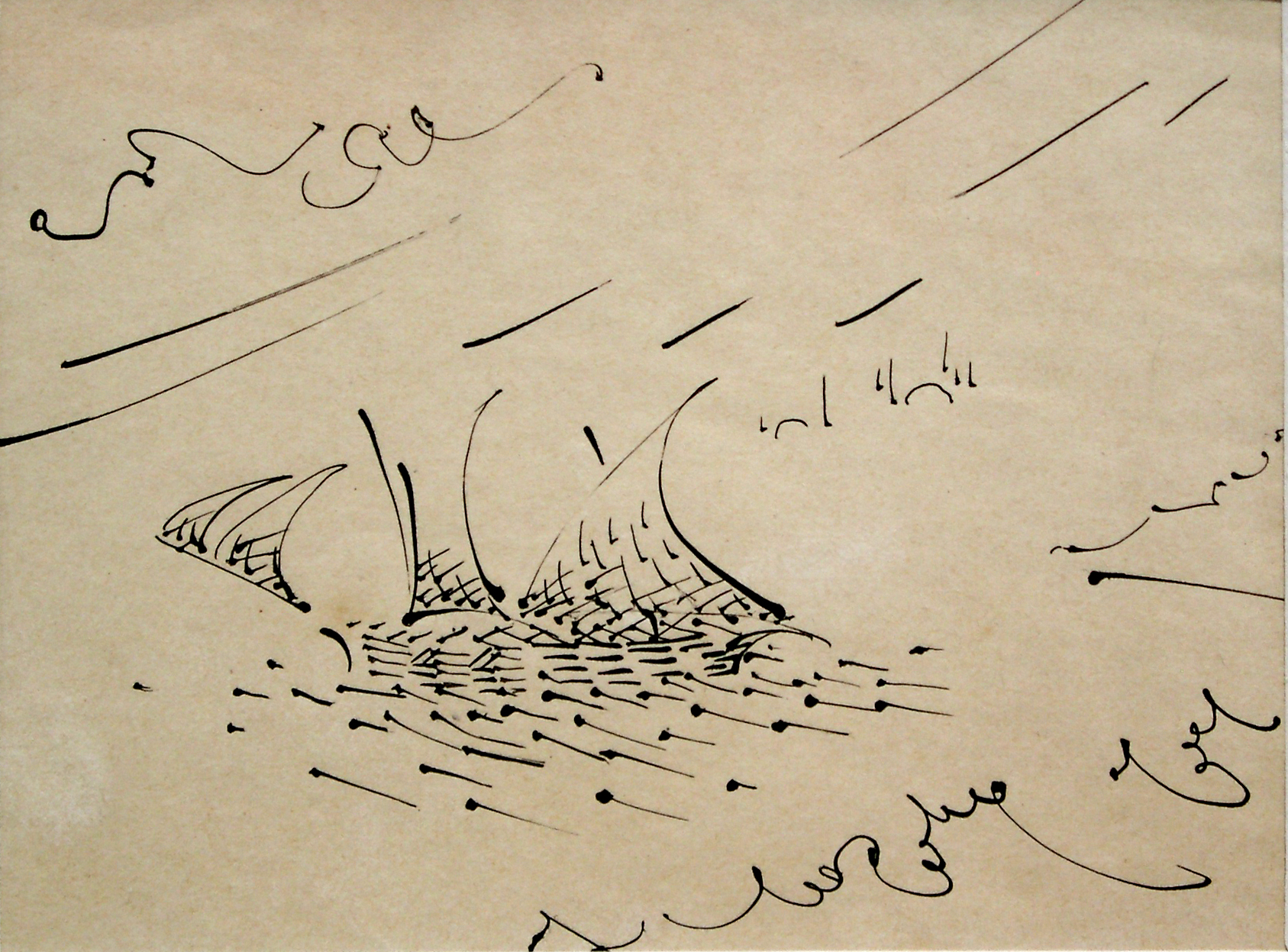
Traugott Fuchs, Sailing ship close to Istanbul, c. 1950s (Traugott-Fuchs-Archiv Istanbul). 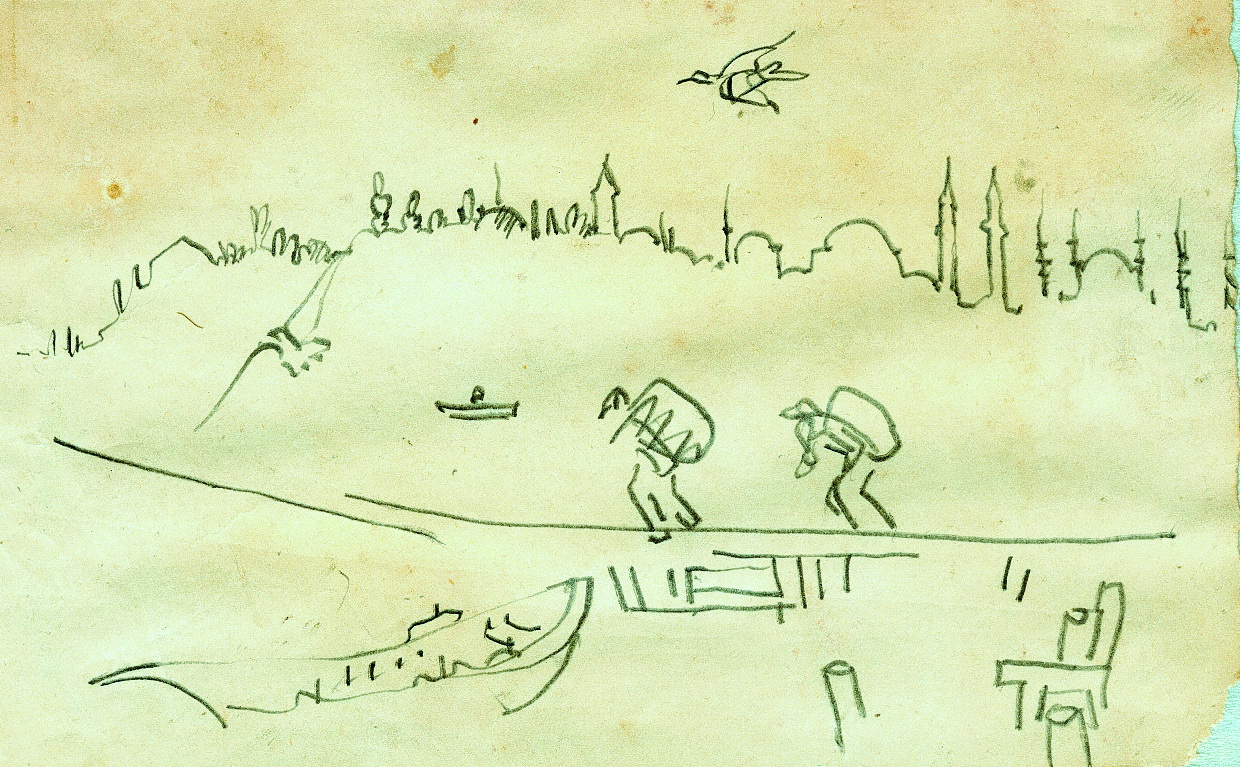
Traugott Fuchs, City silhouette with load carrier, n.d. (Traugott-Fuchs-Archiv Istanbul). 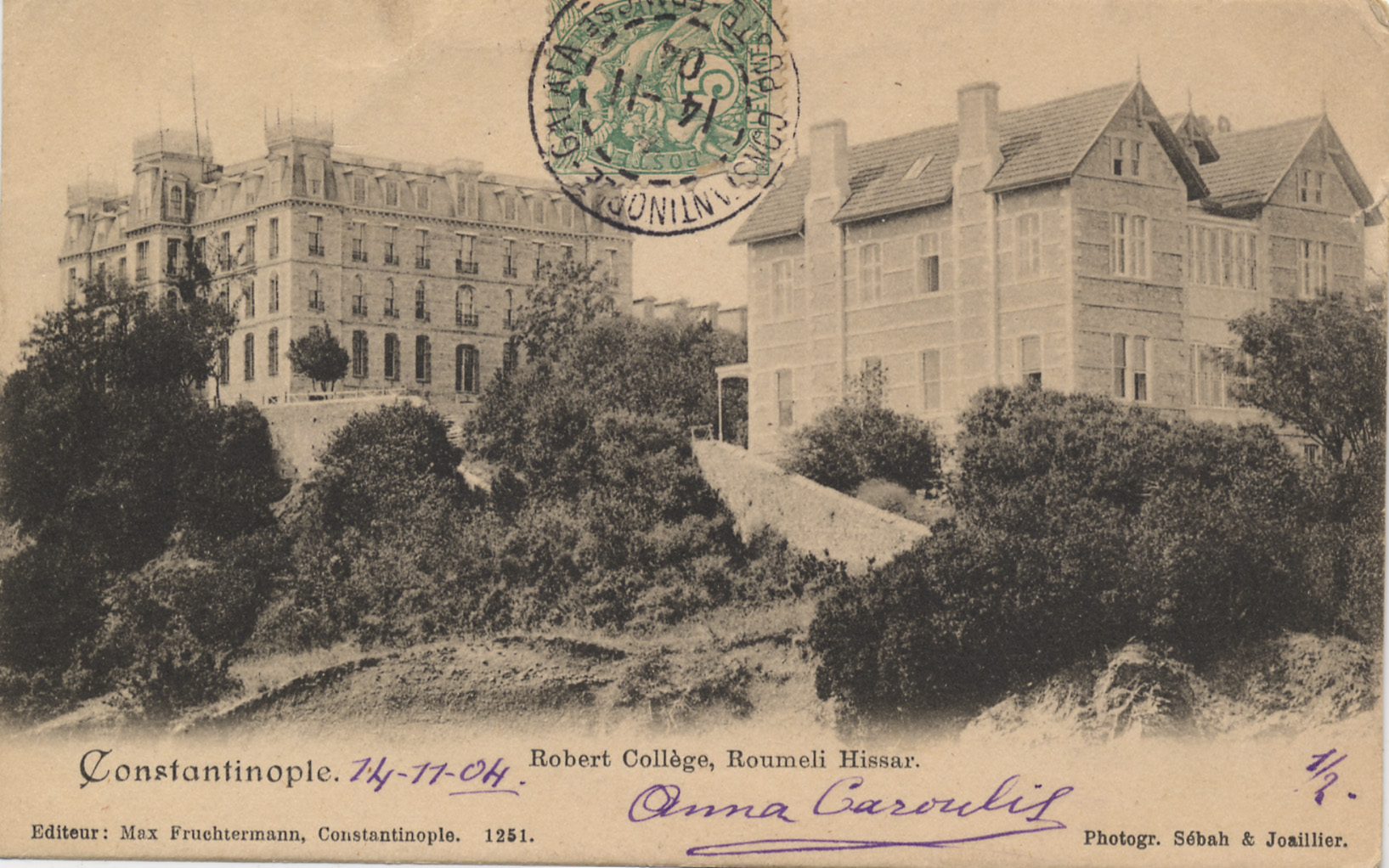
Sébah & Joaillier, Robert Collège, Rumeli Hissar, 1904, photograph, postcard (https://www.flickr.com/photos/saltonline/14243596745/, SALT Araştırma, Fotoğraf Arşivi). Main building and campus of Robert College on the European side of Istanbul, where Traugott Fuchs taught and lived from 1952. 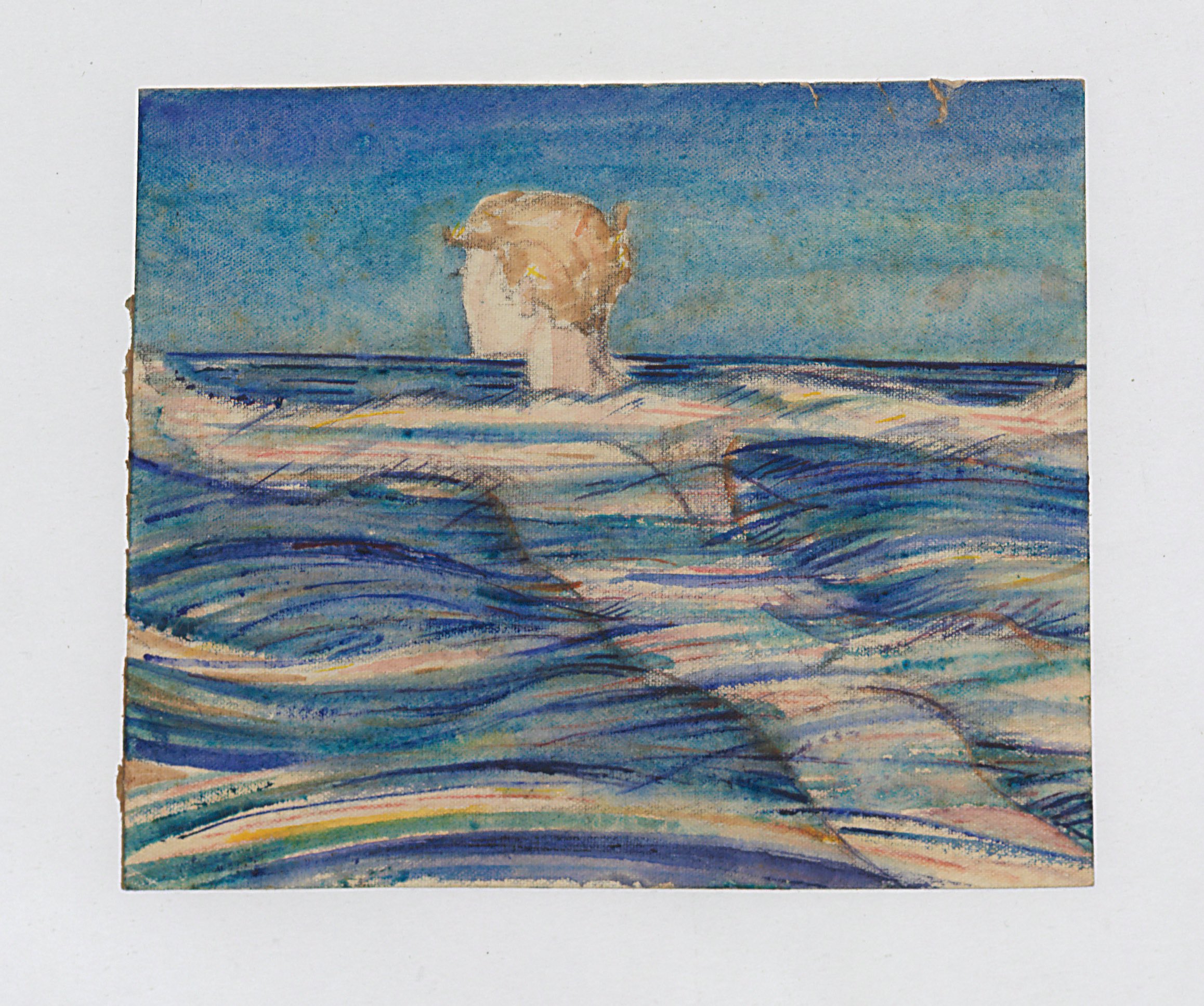
Traugott Fuchs, Young man bathing in blue water, n.d., coloured pencil on paper (Traugott-Fuchs-Archiv Istanbul). This drawing refers to a poem by the Orientalist Hellmut Ritter, with whom Traugott Fuchs had a close friendship. Ritter gave Fuchs refuge in his house in Bebek when he returned from internment in Çorum. 
Hellmut Ritter. “Das Bad im Mittelmeer.” Castrum Peregrini, vol. LXXXIX, Amsterdam, 1969, 94f. (Photo: Gregor Langfeld). Ritter’s poem can be read as a dialogue with the Young man bathing in blue water by Traugott Fuchs. 
Traugott Fuchs, Kleine Käsflattermalve, n.d. (Traugott-Fuchs-Archiv Istanbul). 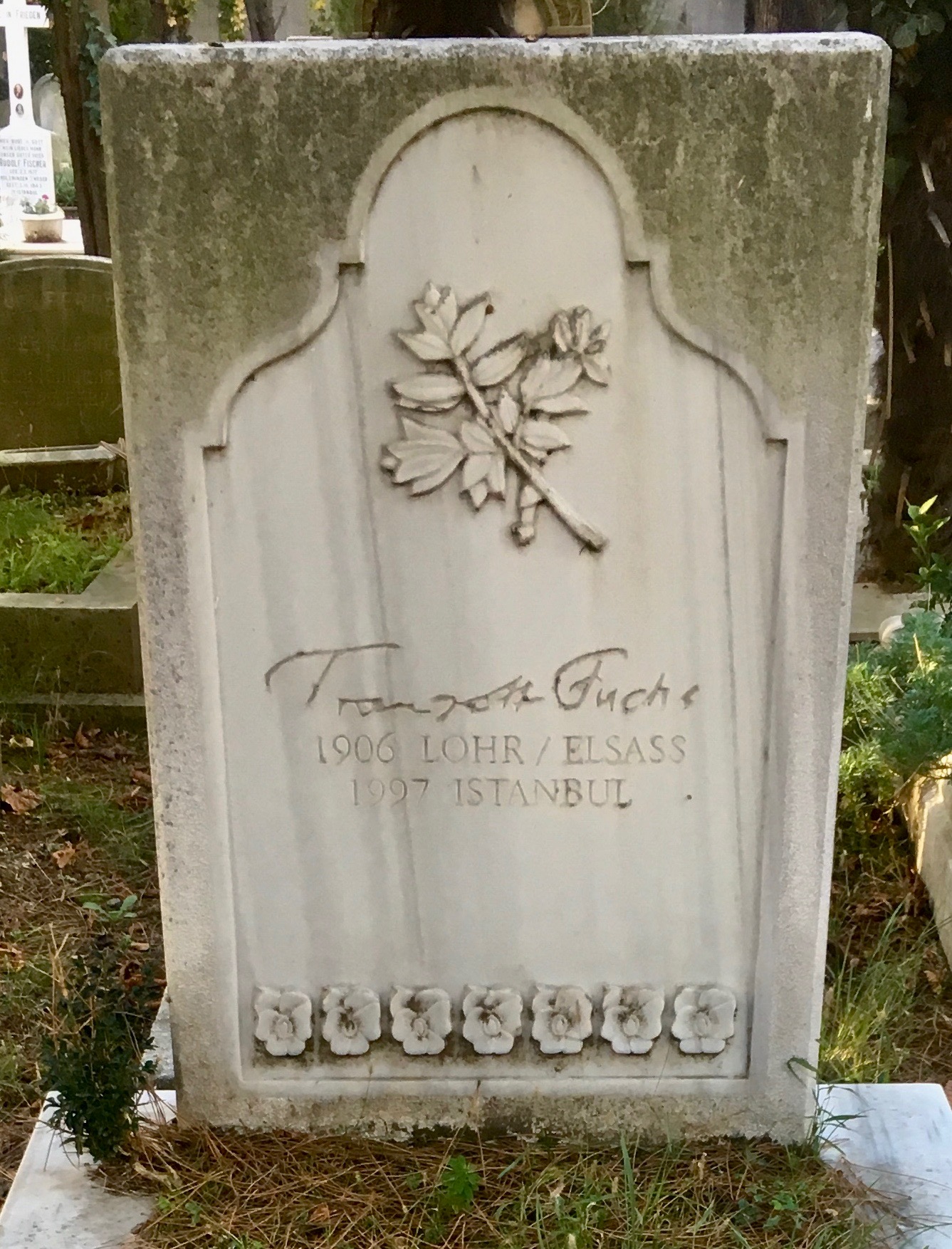
Traugott Fuchs’s headstone, Feriköy cemetery, Istanbul (Photo: Richard Wittmann, 2019). Abasıyanık, Sait Faik. Auf der Löffelinsel. Translated into German by Traugott Fuchs. Traugott Fuchs Cultural and Historical Heritage Archive (manuscript, Boğaziçi Üniversitesi, Istanbul, n.d.).
Artemel, Süheyla, et al., editors. Traugott Fuchs – Türkiye’de Geçen Bir Yaşam – Ein in der Türkei verbrachtes Leben – A Life in Turkey. CECA Publications, 1995.
Bilder der Sehnsucht. Traugott Fuchs – ein Leben am Bosporus, edited by Hermann Fuchs, exh. cat. Deutsche Welle, Cologne, 2001.
Deleon, Jak. “Bir Anadolu Sevdalısı: Traugott Fuchs.” Sanat Çevrisi, no. 92, 1986, pp. 30–31.
Dietrich, Anne. Deutschsein in Istanbul. Nationalisierung und Orientierung in der deutschsprachigen Community von 1843 bis 1956 (Schriftenreihe des Zentrums für Türkeistudien, 13). Leske & Budrich, 1998.
Fischer-Defoy, Christine. “‘Ich habe keine andere Wurzel als meine Sehnsucht nach Liebe und Wahrheit = Freiheit’. Traugott Fuchs. Ein Leben am Bosporus – Bilder der Sehnsucht. Rede zur Eröffnung der Ausstellung am 19. Juni 2009 in der Galerie im Saalbau Neukölln.” Aktives Museum. Mitgliederrundbrief, no. 61, July 2009, pp. 13–17, https://www.aktives-museum.de/fileadmin/user_upload/Extern/Dokumente/Rundbrief_61.pdf. Accessed 23 March 2021.
Fuchs, Hermann. “E-Mail to Burcu Dogramaci.” 7 January 2021.
Fuchs, Traugott. La premiere poésie de Rimbaud, Istanbul Üniversitesi Edebiyat Fakültesi, 1937.
Fuchs, Traugott. “A short story of my life.” Traugott Fuchs. Çorum and Anatolian Pictures, exh. cat. Boğaziçi Üniversitesi, Cultural Heritage Museum, Istanbul, 1986, pp. 7–14.
Johnson, Brian, and Richard Wittmann. “A Brief Guide to Istanbul’s Feriköy Protestant Cemetery.” 17 June 2020, Feriköy Protestant Cemetery Initiative, http://www.ferikoycemetery.org/visitor-guide/. Accessed 23 March 2021.
Kırlı, Cengiz, and Nurçin Ileri, editors. Bavullardan kataloglara: Boğaziçi Arşivleri'ne doğru. Boğaziçi Üniversitesi, 2015.
Özbek, Yasemin. “Heimat im Exil. Lebensalltag am Bosporus in Briefen von Traugott Fuchs an Rosemarie Heyd-Burkart.” “Istanbul”. Geistige Wanderungen aus der “Welt der Scherben”, edited by Georg Stauth and Faruk Birtek, Transcript, 2007, pp. 159–190.
Ritter, Hellmut. “Das Bad im Mittelmeer.” Castrum Peregrini, vol. LXXXIX, Amsterdam, 1969, 94f.
Schweißgut, Karin. “Traugott Fuchs – ein Leben als Migrant in Istanbul.” 11. September 2020, Orient-Institut Istanbul, https://www.oiist.org/traugott-fuchs-ein-leben-als-migrant-in-istanbul/. Accessed 23 March 2021.
Stauth, Georg. “Hellmut Ritter and Traugott Fuchs in Istanbul – Orientalism, life and ideas and life in exile.” Wiener Zeitschrift für die Kunde des Morgenlandes, vol. 101, 2011, pp. 407–424.
The Futureless Memory, exh. brochure, Kunsthaus Hamburg, Hamburg, 2020, https://kunsthaushamburg.de/wp-content/uploads/2020/07/Besucherblatt-The-Futureless-Memory-DRUCK.pdf. Accessed 22 December 2020.
Vialon, Martin. “Traugott Fuchs zwischen Exil und Wahlheimat am Bosporus. Meditationen zu klassischen Bild- und Textmotiven.” “Istanbul”. Geistige Wanderungen aus der “Welt der Scherben”, edited by Georg Stauth and Faruk Birtek, Transcript, 2007, pp. 53–130.
Wiemers, Gerald, and Suzan M.R. Kalayci. Bonds of Exile. Gefesselt im Exil. Sürgün Bağları. Traugott Fuchs, edited by Süheyla Artemel and Lale Babaoğlu, exh. cat. Boğaziçi University, Istanbul, 2007.
Word Count: 444
Traugott-Fuchs-Archiv Istanbul
Word Count: 2
My deep gratitude goes to Hermann Fuchs, who sent me information on the Istanbul addresses of Traugott Fuchs and allowed me to reproduce his works. I am grateful to Richard Wittmann, who encouraged and supported my research. I thank Katja Schneider from the Kunsthaus Hamburg, whose exhibition The Futureless Memory (2020) drew my attention to Traugott Fuchs, and Gregor Langfeld, who provided me with a reproduction of Hellmut Ritter’s poem in Castrum Peregrini.
Word Count: 73
Istanbul, Turkey (1934–1997)
Yoğurtçu Zülfü Sokak No. 21, Bebek, Istanbul (residence shared with Hans Marchand and Heinz Anstock, May 1934–Oct. 1934); Hekimbaşı Salih Efendi Yalısı, Anadolu Hisarı, Körfez Caddesi No. 53, Beykoz, Istanbul (residence, c. 1938); Cevdat Paşa Caddesi No. 62, Bebek, Istanbul (residence, c. 1940–August 1944); c/o Hellmut Ritter, Inşirah Sokak No. 34, Bebek, Istanbul (residence, Nov. 1945–Nov. 1946); Hazine Sokak No. 1 (now Iskele Sokak/Cami Sokak), Ortaköy, , Istanbul (residence, Dec. 1946–Dec. 1951); Robert College, Hamlin Hall (Robert Kolej, now Boğaziçi University), Bebek, Istanbul (workplace and residence, 1952–1971); Kışlak Sokak No. 24, Rumeli Hisar, Istanbul (residence, 1971–1991); Saint George Austrian Hospital, Bereketzade Medresesi Sokak No.7, Beyoğlu, Istanbul (1991–1997).
- Istanbul
- Burcu Dogramaci. "Traugott Fuchs." METROMOD Archive, 2021, https://archive.metromod.net/viewer.p/69/2949/object/5138-10832903, last modified: 14-09-2021.
-
Roman BilinskiPainterSculptorCollectorArt restorerIstanbul
At the beginning of the 1920s, a member of the Union of Russian Painters in Constantinople, Roman Bilinski was known as a sculptor. At the end of the 1920s–beginning of the 1930s – as a sculptor, painter and connoisseur of local antiques.
Word Count: 42
Ragıp Devres VillaBuildingResidenceIstanbulThe house designed by the Swiss-Austrian architect Ernst Egli for the engineer Ragip Devres in Istanbul Bebek left its mark on the Turkish villa landscape.
Word Count: 25
Dimitri IsmailovitchPainterArt HistorianIstanbulIn Istanbul, Ismailovitch became one of the leaders of the Union of Russian Painters in Constantinople, organised three solo exhibitions, and made contribution to the study of Byzantine art.
Word Count: 29
Leonore KosswigBiologistPhotographerEthnographerIstanbulThe exiled biologist and photographer Leonore Kosswig was one of the pioneering women researchers travelling alone in the 1950s and exploring customs and ways of life in Turkey and Iraq.
Word Count: 30
Türk Sanatı. Başlangıcından Günümüze kadarBookIstanbulThe Viennese Ernst Diez lived in Turkey from 1943 to 1950. His textbook Türk Sanatı (1946) stirred a debate on Turkish art and its relations to Byzantine and Armenian art.
Word Count: 28